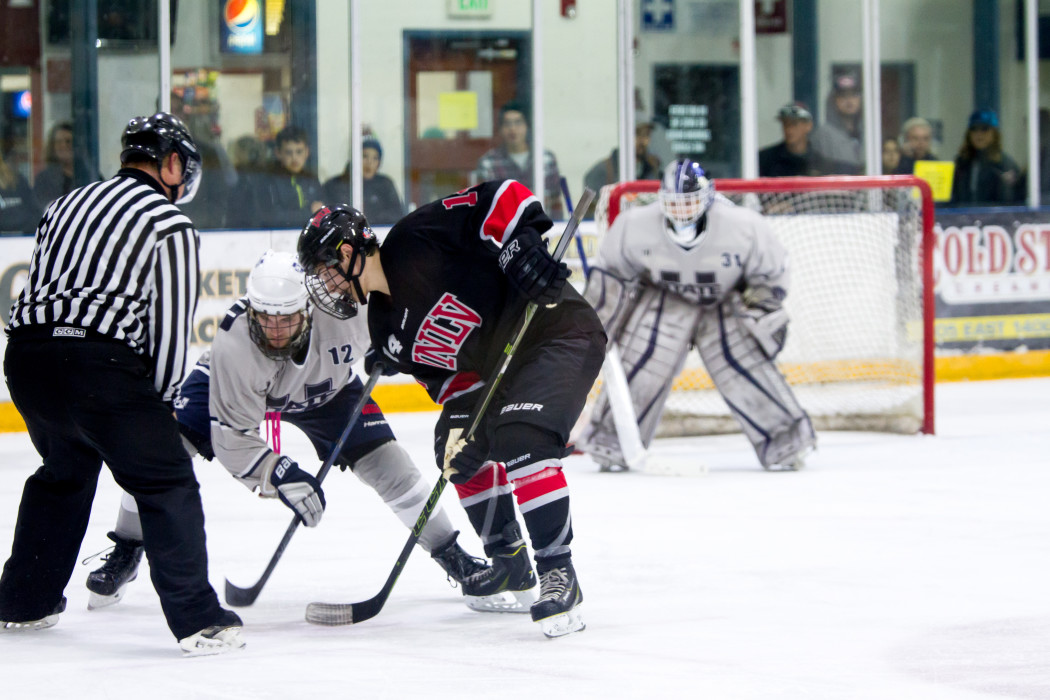Utah State hockey one of Cache Valley’s unique treasures
The Utah State club hockey team has been a staple in Logan for years. A game often overlooked in the western United States in favor of sports like football and basketball, ice hockey has found a small haven in the confines of Cache Valley.
Alissa Brown, a USU student, hockey fan and former receptionist at the Eccles Ice Center, makes an effort to attend every home game.
“Hockey is just a fun sport, there is so much energy there,” Brown said. “The team works really well together and you can see their passion when they play.”
Although the team is not sponsored by the school, players often put in extra hours on the ice.
“A lot of the players will come practice on their own,” Brown said. “They really care about it.”
“The community is a huge supporter of the program, because it’s not just college kids that are coming,” said Utah State head coach Jon Eccles. “It’s the community and college kids, and it makes for a fun atmosphere.”
Some of the loudest moments in the arena come when a defender careens into an opposing player, smashing him against the board. Defender Joseph (Jo-Jo) Chase said that physicality gets into the heads of offensive players, causing them to think twice and look around when they attack.
“You have aspects of football with the physicality.” Chase said. “We’re moving at twice the speed you can run at — running into each other, with even less padding. Then there’s the mental aspect of it; we are playing a chess match out there, but it’s at the speed of basketball.”
No other team sport is played on ice (unless you want to count curling). Each of the players glides seemingly effortlessly across the rink. There is non-stop motion from nearly every player. As such moving itself is a mind game that every player engages in even while they play hockey.
Perhaps one of the most unique aspects of hockey is the quick, fluid substitution. On average, a player will spend anywhere from 45 seconds to a minute and 15 seconds on the ice before being subbed out again. Unlike soccer or basketball, the game doesn’t stop to wait for players to switch out — if you switch out at the wrong time, the opposing team could have a run at the goal.
“It’s a numbers game,” said forward Alex Herman. “You have to be aware of their defense. If you have less numbers, then you have to strategize and dump the puck into their zone and then attack [it] with the forwards. We call that a forecheck. If you have more numbers, then there’s no need to do that. So you try to establish dominance in the zone, so you go into attack and try to rush them and get the puck toward the net or find someone open on the wing and get a shot.”
The “forecheck” Herman mentioned is one of the most fundamental aspects of a hockey offense. A forward or defender will hit the puck forward into one of the corners of the opponent’s end of the court. The forwards will then attack the opposing defender who tries to retrieve the puck to take it back. After taking the puck, the forwards can then set up and try to score.
Chase, a defensive specialist, takes pride in the physicality of the game.
“You want to dominate them in your zone,” he said. “Let them know every time they come down your side that you’re going to hit them, give them a stick in the ankle, or a crosscheck. Let them know that you’re there all night. Just start to wear on them mentally and physically.”
With dedicated locals and new college kids pouring into their first hockey experience each year, USU hockey’s unique offering should continue to gather fans for years to come.

